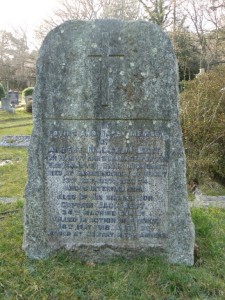Regiment: Royal Sussex / Machine Gun Corps
Service No:
Date and place of birth: 1892, Harrow on the Hill
Date and place of death: 15 May 1918 (aged26), Bresle, France
Family background
Jack Best was the second son of Albert Malcolm and Lizzy Jane Best (nee Marner) who married in Greenwich in 1890.
In 1901 the family were living in Harrow on the Hill and Albert (38) was working as a bank clerk. With him were his wife Lizzy (39), his 3 sons Albert J Best (10), Jack Best (9), Ernest Best (7) and his niece Lilian A Best (19).
By 1911 Albert Malcolm Best (48) and Lizzy Jane (49) were living at Ivy Cottage, 8 Station Road, Petersfield with Albert Frank Best (20) and Ernest Best (17). All three men were bank clerks. Jack Best (19) was also a bank clerk, boarding with John and Agnes Adams in their house on the High Street, Uckfield.
According to his army record Jack Best worked for the London County and Westminster Bank.
Military service
Jack Best served with Churcher’s College OTC, Petersfield. He enlisted at the outbreak of war in Hampshire RGA and after three months was gazetted to the Royal Sussex Regiment.
In 1916 he transferred to the Machine Gun Corps.
Jack Best served with the Machine Gun Corps, 36th Battalion, as an acting Captain. He was appointed Acting Major on 18 February 1918.
At the outbreak of War in August 1914, each infantry battalion and cavalry regiment had a machine gun section with just two guns each. By November, the formation of a Motor Machine Gun Service (under the Royal Artillery), was a very basic set-up of motorcycles with a machine gun mounted on them. Two training schools were established in Grantham, Lincolnshire and France and the MGS became a Corps in October 1915, with Infantry, Cavalry and Motor Branches. The Infantry division was the largest and in 1916 the Heavy Branch was included. The Cavalry Branch consisted of Machine Gun Squadrons, one squadron for each Cavalry Brigade.
The MGC was to serve in all main Theatres of War, including France, Belgium, the Middle East and Africa. The Corps quickly gained a reputation for heroism and was soon a force to be reckoned with.
In the two short years of its operational existence, it gleaned physically fit and intelligent men from the ranks and this was possibly why the Corps was not always universally popular. To maintain these very mobile units required a high degree of physicality and good mathematical skills to configure and man the Vickers guns.
36th Company MGC was formed in February 1916 in France at Hamen Artois and by March 1918 they were part of the 12th (Eastern) Division. Having taken part in the First Battle of Arras from 26 March and having repelled many enemy attacks with heavy casualties, on 2 April the Division was again on the front line and in receipt of further heavy losses. 2,919 were killed, injured or missing in one single day. At the time of Jack Best’s death, the division was re-grouping around Auchonvilliers and Mailly-Maillet awaiting replacements.
After the Armistice, the MGC was re-organised into a smaller unit and went on to see active service in Russia, Afghanistan and India. Because of its versatility and mobility, it became a predominant force in those parts of Germany that were occupied by the British Forces during the Peace negotiations. Its equipment and training allowed for a relatively small Garrison to control a large population.
The Corps was disbanded in 1922. A total of 170,500 officers and men served in the MGC and 62,049 became casualties including 12,498 who lost their lives. There is a Machine Gun Corps Memorial at Hyde Park Corner, London.
Death and commemoration
Jack Best is buried in Row VIII A. 19 in Contay British Cemetery. The site was chosen in August 1916 for casualties from the 49th Casualty Clearing Station and had been used until March 1917. It was re-opened in 1918 as the Allies progressed east during the Spring offensive.
His father, who at the time was Bank Manager at the Midhurst branch of the London County and Westminster Bank, was informed by the Director, Graves Registration and Enquiries that “the grave has been registered in this office and is marked by a durable wooden cross with an inscription bearing full details”.

He is commemorated on the Midhurst War Memorial; he and his two brothers “Albert Frank Best MC (Wounded)” and “Ernest Best (Wounded)” are listed on Panels in Midhurst Parish Church. He is also listed on the family memorial stone in Midhurst Cemetery. His date of death is given on this as 18 May 1918, but his army record gives 15 May 1918.
According to De Ruvigny’s Roll of Honour 1914-18, his Major wrote “Your son was with me only a short time but we had grown to be friends; I had always found him to be a soldier and a gentleman” and the Chaplain “He was thought of very highly by his brother officers and by his men”.
Subsequent family history
Albert Malcolm Best died in 1937, aged 74, and is buried in Midhurst cemetery. Lizzy J Best of Moro, Carisbrooke, Isle of Wight, died in 1956, aged 95. Lizzy was buried with her husband in Midhurst. Probate records show she left £7917 16s 5d to Albert Frank Best retired lieutenant-colonel H M Army and Ernest Best retired bank manager. The family memorial stone includes Major Ernest Best, died 2 February 1974, and Albert Frank Best MC, died 25 September 1985, aged 94.